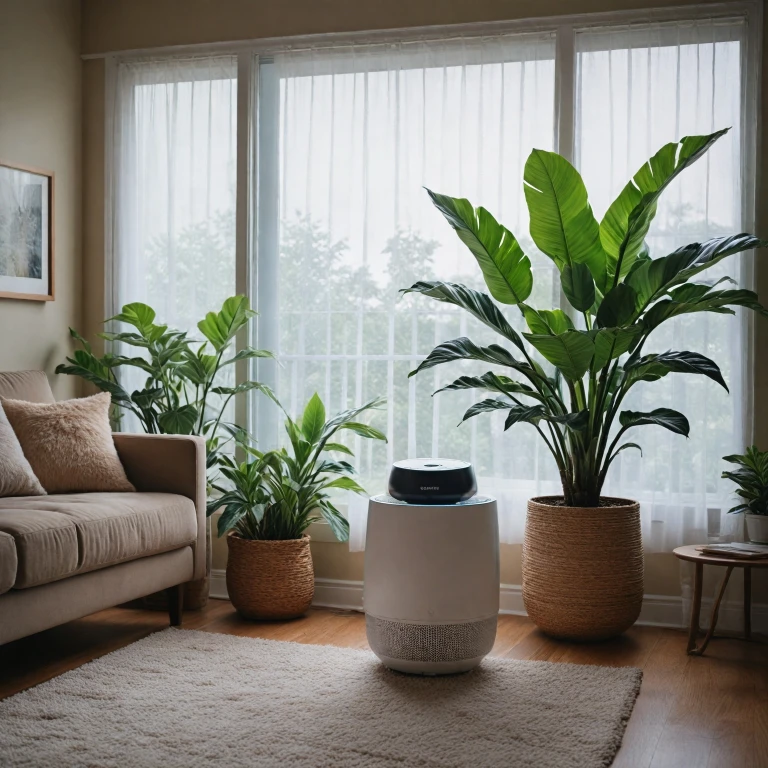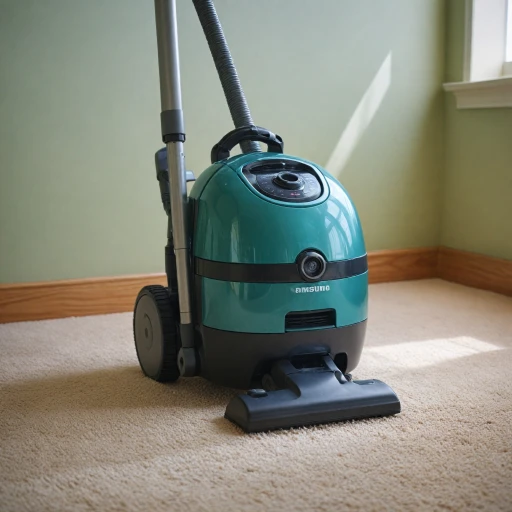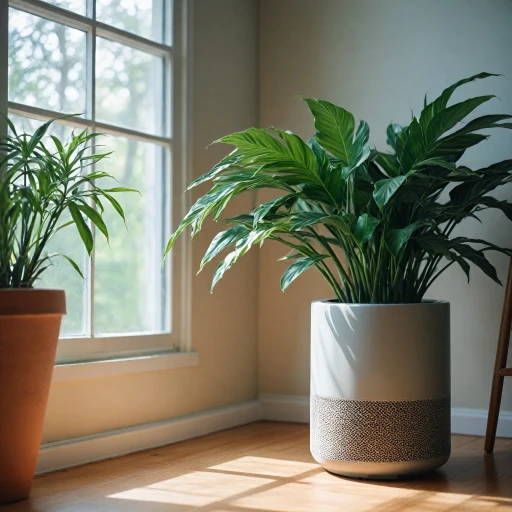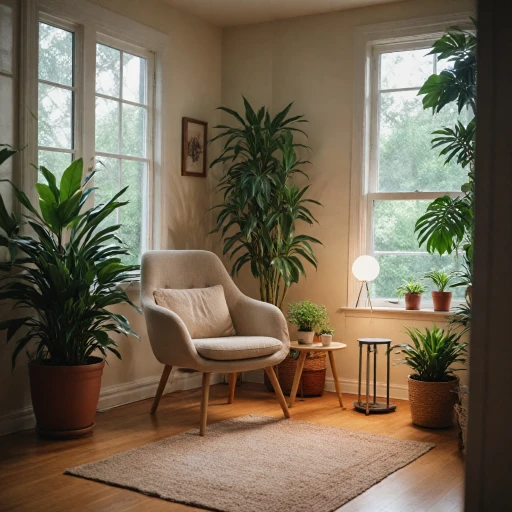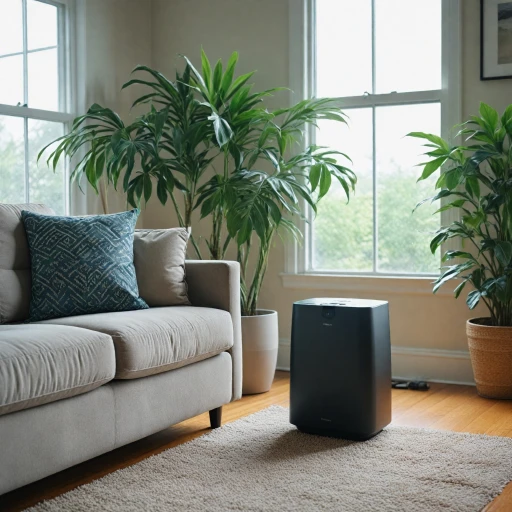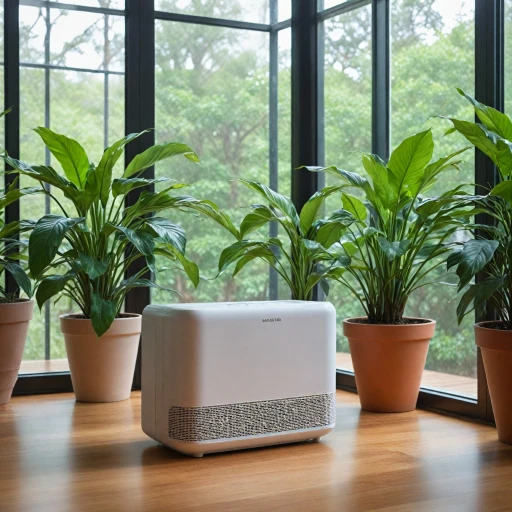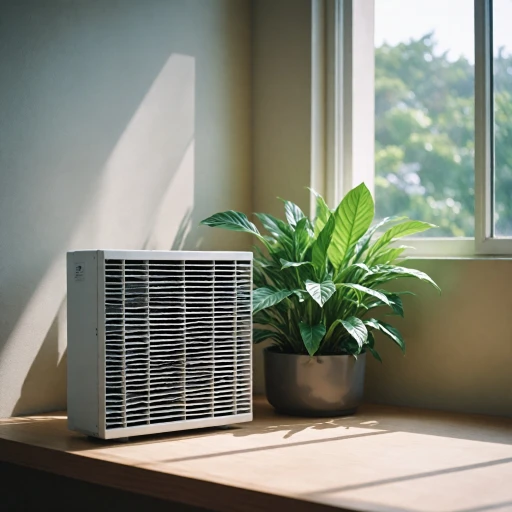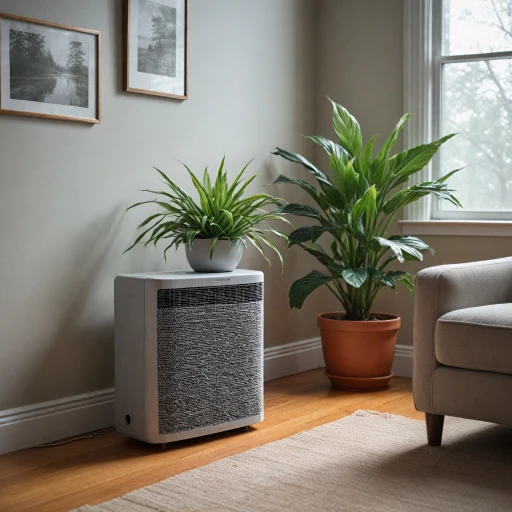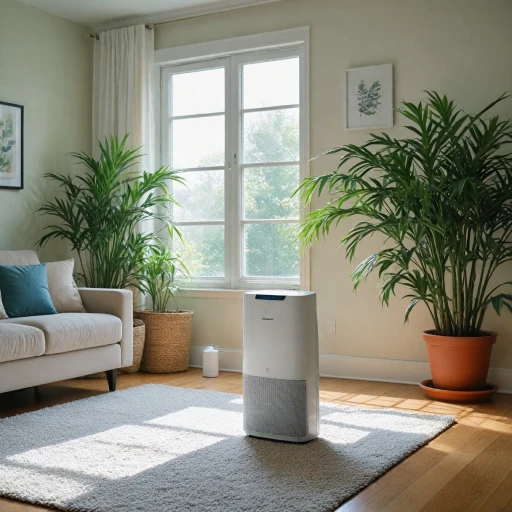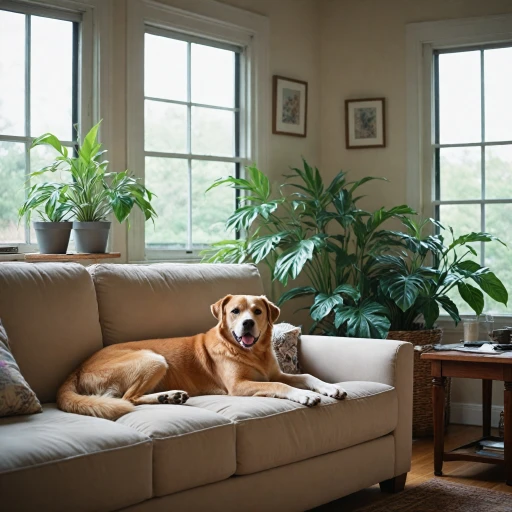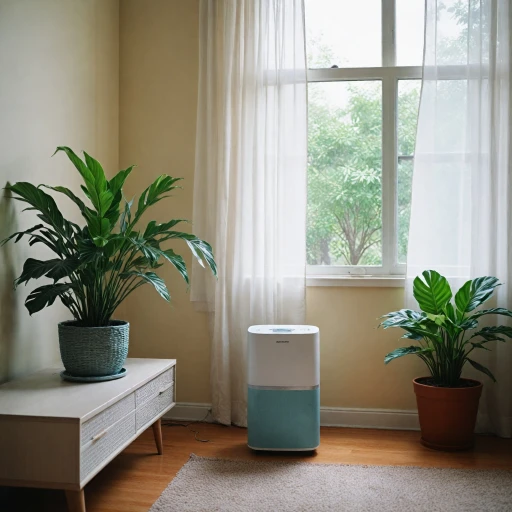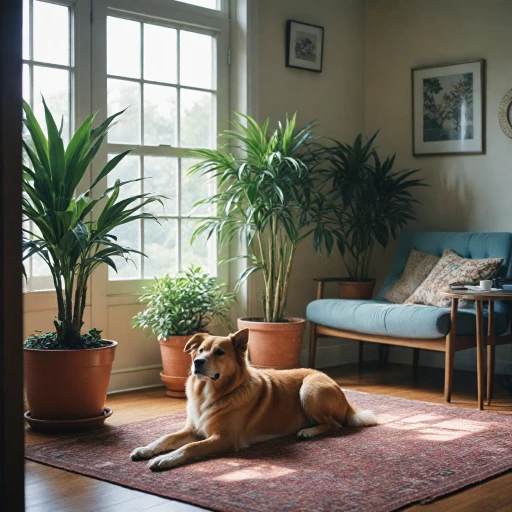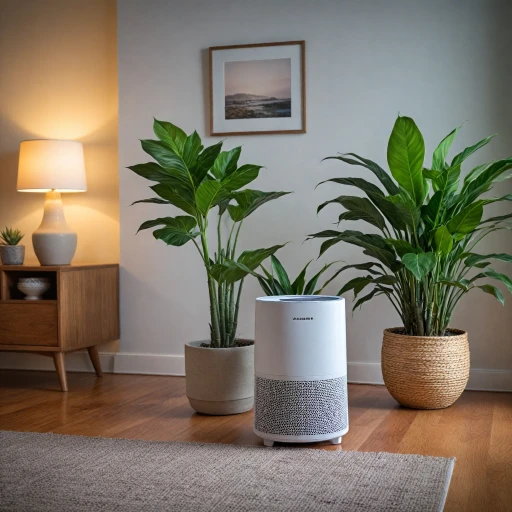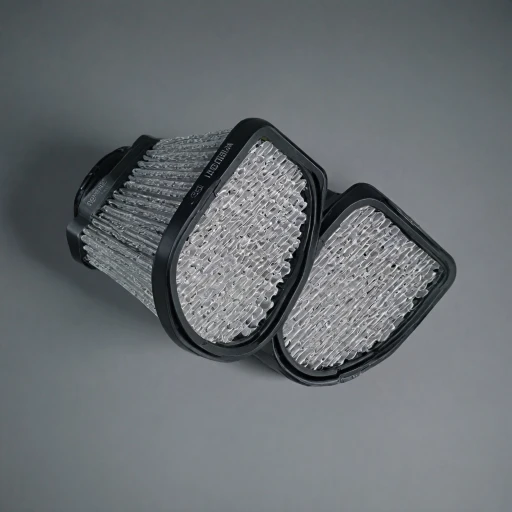
Understanding the Need for a Small Air Purifier
Why Opt for a Compact Air Purifier?
With the increasing awareness of indoor air quality, many individuals are seeking efficient yet space-saving solutions to breathe clean air. Compact air purifiers are designed to fit snugly in small spaces, making them ideal for various settings, such as bedrooms, small offices, or dorm rooms. These purifiers provide a powerful punch in terms of purification, without taking up too much room or making too much noise.
When it comes to choosing the right unit, understanding your specific needs can guide your selection. Small air purifiers are often equipped with features like high-quality HEPA filters and activated carbon filters, which trap and neutralize pollutants such as dust, smoke, and pet dander effectively.
Small air purifiers are particularly beneficial in environments where space is limited but clean air is crucial. These purifiers are often equipped with a choice of modes, including auto mode, to adjust power to the current air quality, ensuring optimal performance without unnecessary energy consumption. With today’s technology, even the smallest purifiers present powerful CADR (Clean Air Delivery Rate) scores, indicating an efficient air cleaning process.
Investing in a compact purifier doesn’t mean compromising on price or performance. Models from brands like Levoit, Blue Pure, or Coway Airmega come highly recommended for their efficiency and affordability. These air purifiers have been rigorously tested to meet stringent standards, offering both reliability and functionality.
In the following sections, we will explore the best features to consider, compare popular models, and provide practical placement tips to maximize your small air purifier’s potential.
Key Features to Look for in a Compact Air Purifier
Identifying the Must-Have Features
When looking for the best air purifier for small rooms, several key features significantly impact the performance and suitability for your space. Here's a breakdown of what you should focus on:
- HEPA Filters: A must-have for any quality air purifier, true HEPA filters are highly efficient in trapping smaller particles. If maintaining clean air indoors is a priority, investing in a purifier with a true HEPA filter is essential.
- CADR Rating: CADR (Clean Air Delivery Rate) is a critical metric measuring the volume of air an air purifier can filter per minute. For small spaces, a higher CADR means faster and more efficient purification. Look for products with a high CADR CFM to ensure optimal performance in compact areas.
- Noise Level: A quiet operation enhances your room's comfort. Some purifiers are known for lower noise emissions, so checking the noise level ratings is wise. Compare models to find one that maintains a peaceful ambiance.
- Auto Mode and Quality Sensors: Many modern purifiers come equipped with auto mode capabilities and air quality sensors. These features enable the device to adjust its filtration power based on the current air quality, providing a hands-free and efficient experience.
- Filter Types: Apart from HEPA, consider purifiers that offer a combination of pre filters, activated carbon filters, or specialized filters to tackle specific pollutants such as odors or smoke. Delve into this guide if you're concerned about smoke or other challenging pollutants.
As you explore different air purifiers, balancing price with features is crucial. Brands like Blue Pure and Coway Airmega are often praised for their performance in small spaces. Products tested like these provide reassurance in achieving the best air quality for your environment.
Comparing Popular Small Air Purifier Models
Analyzing Top Compact Air Purifiers on the Market
When it comes to selecting the best air purifiers for small spaces, consumers today have a plethora of options. Here's a closer look at some popular models to help you make a more informed decision for your space:
- Levoit Core 300: This purifier is often praised for its efficient true HEPA filter that removes 99.97% of airborne particles. With a CADR of 135 CFM, it's suitable for rooms up to 219 sq. ft. The activated carbon filter is a boon for tackling odors and VOCs. Additionally, it operates quietly, making it ideal for bedrooms.
- Coway Airmega AP-1512HH: A favorite for its high-performance filtration system. The true HEPA and carbon filters combine to improve indoor air quality significantly. Plus, its auto mode and Eco mode features enhance efficiency, adjusting power usage based on air quality levels.
- Blue Pure 411: This model's simplicity is one of its strengths. While it offers a pre-filter and main filter combo, the noise level is minimal, which is perfect for noise-sensitive environments. It's also very budget-friendly considering its filtration power.
All these purifiers have been thoroughly tested, ensuring that they meet or exceed expectations in key areas such as CADR CFM ratings and purification efficiency. Regardless of the space you are working with—be it living rooms, small air spaces, or bedrooms—each of these models brings unique features and reliable air purifying capabilities.
Placement Tips for Optimal Performance
Strategic Placement for Maximum Efficiency
To truly reap the benefits of a compact air purifier, optimal placement is key. Despite their small stature, these devices can significantly enhance air quality in rooms if utilized effectively. Consider these important factors when positioning your compact purifier:
- Central Location: Placing your air purifier in a spot where air flows freely ensures that the device can filter impressions of dust and allergens throughout the room. Avoid positioning it in corners or behind furniture where air circulation is hindered.
- Elevation: Most experts recommend placing purifiers at about three to five feet off the ground. This height aligns with the typical breathing zone and can aid in capturing a greater volume of indoor air.
- Avoid Obstructions: Ensure there is a clear space around the purifier, free from objects that may block the intake of polluted air. This space allows the device to draw in air effectively and push out clean, filtered air.
- Close to Sources: If there's a specific source of pollution, such as a kitchen or smoking area, position the air purifier nearer to this source. This strategic placement allows the purifier to immediately address the problem before polluted air disperses.
While it might seem intuitive to tuck the purifier away in a remote corner, doing so could significantly diminish its ability to improve air quality. Understanding your room's unique dynamics and adjusting according to the device’s specifications and power capabilities will ensure that you get the best from your investment. Additionally, pay attention to the noise level of the purifier. Some products, especially those with high cadr cfm ratings, may generate noise, so find a balance between performance and comfort based on your available space.
Maintenance and Care for Longevity
Regular Cleaning for Optimal Performance
Maintaining your compact air purifier is crucial to ensure it continues to deliver high-quality air in your small spaces. Regular cleaning of the pre filter is essential, as it captures larger particles and helps extend the life of the main HEPA filter. Depending on the model, such as the popular Levoit or Coway Airmega, you might need to clean or replace the pre filter every few weeks. Always refer to the manufacturer's guidelines for specific instructions.
Replacing Filters on Time
Filters are the heart of any air purifier, and timely replacement is key to maintaining clean air. True HEPA filters, known for their efficiency in trapping small particles, should be replaced every 6 to 12 months, depending on usage and air quality. Activated carbon filters, which help reduce odors and VOCs, may also need regular replacement. Check the filter indicator, if available, to know when it's time for a change. Investing in high-quality filters ensures your purifier operates at its best.
Monitoring Noise Levels
Noise level can be a concern, especially in small rooms where the purifier is close to your living space. Regular maintenance can help keep the noise to a minimum. Ensure that all parts are securely in place and that the fan is free from dust and debris. Some models, like the Blue Pure, offer an auto mode that adjusts the fan speed based on air quality, which can help manage noise levels effectively.
Utilizing Built-in Features
Many compact air purifiers come with features designed to enhance performance and ease of use. For instance, a quality sensor can help you monitor indoor air quality and adjust settings accordingly. Some purifiers tested, like those with a high CADR CFM rating, offer superior performance in small spaces. Make sure to utilize these features to get the best out of your air purifier.
Cost-Effective Maintenance
While maintaining your air purifier might seem like an added expense, it can be cost-effective in the long run. Regular maintenance helps prevent costly repairs and ensures your purifier operates efficiently. Consider purchasing replacement filters in bulk from retailers like Amazon to save on price. Keeping your purifier in top condition not only improves air quality but also extends the life of the product.
Addressing Common Concerns and Misconceptions
Clearing Up Air Purifier Misunderstandings
When considering a small air purifier, it's common to have questions or misconceptions. Addressing these can help you make a more informed decision:
- Noise Levels: A frequent concern is the noise generated by air purifiers. Modern devices are designed to operate quietly, even in small air spaces. Many purifiers now include a noise level indicator, with some models offering a sleep or auto mode to reduce sound when full power isn't needed.
- Filter Functionality: Understanding the filtering process is crucial. The best air purifiers typically feature a true HEPA filter, which captures 99.97% of airborne particles. The addition of an activated carbon filter can further improve quality by removing odors and certain gases. For assurance of performance, consider purifiers that include a quality sensor to adjust operation based on the air quality.
- Price versus Performance: While budget is vital, the price of a purifier shouldn't be the only deciding factor. By exploring options like Levoit or Coway Airmega, you can find products that balance cost and performance, offering high CADR (Clean Air Delivery Rate) CFM scores and efficient operation.
- Room Coverage: It's important that the purifier's specs match your room size. Units like Blue Pure are optimally designed for small rooms, but for larger spaces, check the manufacturer's guide to ensure effective coverage.
- Misleading Marketing: Be cautious with marketing claims. Terms like "smoke eater" might be misleading if they don't refer to a purifier with the required filter standards. Verified reviews on platforms like Amazon can provide insights into real-world performance.
By keeping these considerations in mind, you can navigate the world of small air purifiers more effectively, ensuring you choose a device that meets your requirements and maintains indoor air quality.
